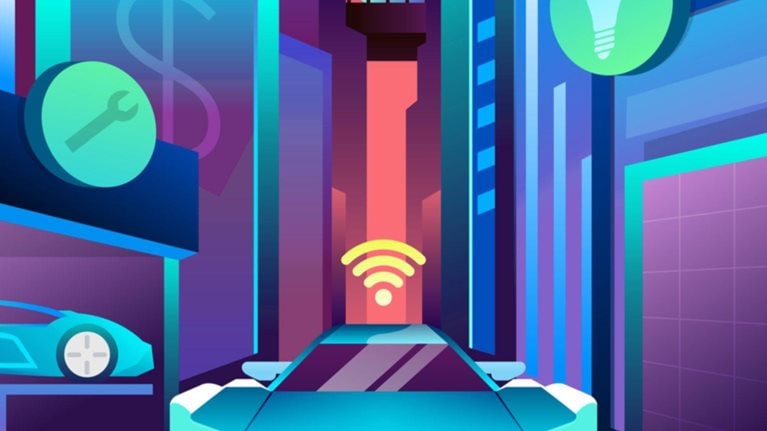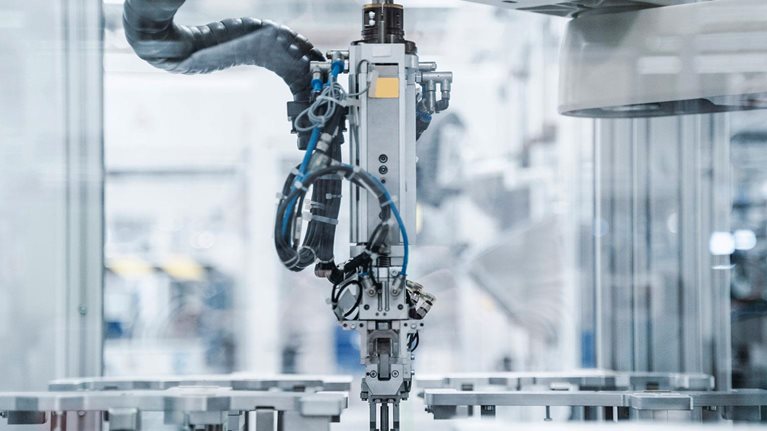This article was written collaboratively by the Automotive & Assembly practice. The authors include Alex Brotschi, Daniel Christof, Joe Dertouzos, Sebastian Kempf, and Prashant Vaze.
Every day, healthcare experts and data analysts update models predicting the spread of coronavirus to show the extent of the human tragedy—the number of lives lost, patients hospitalized, and unemployed workers. Despite the intense scrutiny, much uncertainty persists.
Within the automotive sector, COVID-19 is a massive, once-in-a-lifetime disruption, and the situation is changing rapidly. To gain more clarity about the pandemic’s potential impact on the light-vehicle aftermarket—encompassing parts, accessories, and tire sales—we reviewed both past and current trends. First, we looked at previous crises to quantify how demand, revenue, and other aftermarket performance indicators typically change during a downturn. We then considered the current global health crisis and created scenarios showing how the aftermarket might evolve this year, as the pandemic abates, and over the longer term, as we enter the “next normal.”
Our analysis focused on challenges unique to the COVID-19 crisis, including a sudden and steep drop in vehicle miles traveled (VMT) and customer foot traffic because of physical distancing. These shifts, combined with the potential for a slow economic recovery, mean that aftermarket demand may take years to recover to 2019 levels. With so many challenges ahead, aftermarket players should take steps now to improve their business and emerge stronger from the crisis.
Although our analysis focuses on the United States and Europe, we also reviewed developments in the Chinese aftermarket, which is showing signs of recovery.1
Looking back: Aftermarket performance in previous crises
The light-vehicle aftermarket has typically been the most recession-resistant part of the automotive industry. Its size primarily depends on the size of the car parc, rather than new vehicle sales. When economic pressure causes drivers to delay purchasing new cars, repairs on their current (and older) vehicles become even more vital.
To appreciate the aftermarket’s resilience, consider the financial crisis from 2007 to 2009. The United States saw GDP drop about 4 percent and the economic repercussions hit automotive purchases hard. Sales plunged 42 percent for new cars and 20 percent for used cars, but the aftermarket experienced only a 1 percent decline (Exhibit 1). This performance is even more remarkable considering that VMT, a key driver of the aftermarket, fell by 2.4 percent over the same period. When we disaggregated the aftermarket into component categories, we found the most significant declines were for performance parts and accessories. These discretionary purchases can be delayed, unlike those in the break-fix-repair categories.

Now consider Germany, which has Europe’s largest aftermarket. The country saw GDP decline about 5 percent during the 2007 to 2009 financial crisis, but government interventions produced somewhat different automotive trends than in the US sector. New-car sales increased by 4.9 percent because a regulatory subsidy provided a financial bonus for new-car purchases if drivers traded in their old vehicles (Exhibit 2). The aftermarket remained relatively stable, although the 3.8 percent drop was much higher than the 0.6 percent reduction in VMT. The financial incentives that the government instituted for new-car purchases reduced the number of older vehicles in the car parc, resulting in a steeper decline for the aftermarket in Germany compared to the United States.

Current challenges: The impact of COVID-19 on the global aftermarket
COVID-19 has created an economic situation that is fundamentally different from any previous crisis. GDP will decrease, as it typically does during downturns, but the drop could be two times greater than the last recession, with lagging impact and high uncertainty in the following quarters. The coronavirus crisis will also introduce five additional aftermarket-relevant factors that were absent in the 2007 to 2009 financial crisis: a drastic reduction in VMT, fewer collisions, lower retail traffic, a significant increase in digital channels and e-commerce volumes, as well as lower public transportation use (Exhibit 3). Some new factors will have a positive effect on aftermarket sales. And some potential developments such as government stimulus packages and declining used-car prices could have a positive and stabilizing influence.2 But by far the largest impact comes from these five factors, which collectively have already had a severe, unprecedented impact on supply and demand.

Lower vehicle miles traveled
In many regions, roads are eerily empty and cities are free of crowds. Congestion indicators released by the navigation-system manufacturer TomTom show a dramatic decline in private and business travel, including commuting. Consider Italy and Spain, two countries that were hard hit in February and March. Car density was down to 17 percent of levels from a year earlier in both Bergamo and Milano, and to 18 percent in Madrid as of March 20. In Germany, where a curfew is in effect in some locations, the traffic load on urban roads had decreased approximately 40 percent by end of March.
Fewer collisions
With regulations keeping people home and lowering car density, the collision rate has dropped in many cities. For instance, Seattle has seen about 50 percent fewer collisions since the government introduced measures to control the spread of coronavirus, while San Francisco has had a drop of about 60 percent. Very similar developments can be observed in Europe. This is clearly excellent news, as fewer accidents translate into fewer injuries and deaths. For the aftermarket, revenue planning should account for fewer crash-repair jobs.
Decreased retail and workshop business
Many people are delaying inspections or discretionary repairs, and some government transportation agencies are relaxing deadlines for mandatory technical controls and inspections. Consumers with lower incomes are also delaying avoidable repairs. These changes are dramatically reducing visits to garages, service stations, and repair workshops, even though these businesses are typically allowed to remain open and can still easily receive parts from distributors. For instance, German garages report that business is down about 50 percent.
Increase in digital channels and e-commerce volumes
In the United States, more end-consumers are now shopping for parts online, which helps mitigate the adverse effect of curfews and closed workshops. This trend was already prevalent in the B2B market, especially those in Asia and Eastern Europe, before it hit B2C.
Lower use of public transportation
Many people are taking fewer trips via public transport and shared-mobility services to reduce social contact. (In some cases, ride-sharing services have also temporarily ceased operations). The increased reliance on personal vehicles may spur demand for aftermarket services once people begin routinely traveling by car again, but it is difficult to predict when that might occur. With many people still remaining close to home, it is unlikely that lower use of public transport will have a substantial impact on aftermarket spending in 2020.
The upcoming year: What’s in store for the rest of 2020
With so much uncertainty ahead, the McKinsey Global Institute created nine scenarios illustrating how the world economy might evolve. When making projections for the aftermarket, we focused on two of these scenarios, labeled A1 and A3 in Exhibit 4.

In A3, the more optimistic scenario, a strong public-health response succeeds in controlling the spread of the coronavirus within approximately two to three months. Policy responses partially offset economic damage, a banking crisis is avoided, and global GDP recovers in the fourth quarter of 2020. In the more pessimistic scenario, A1, the virus resurges, resulting in additional periods in which business activity slows or ceases at the local level. With these complications, global GDP does not recover until late 2022.
We applied these macroeconomic scenarios to our aftermarket-demand model to gain detailed insights about the impact of key aftermarket drivers, such as VMT, on sales of collision and break-fix parts. We also assessed the impact of GDP on sales of discretionary-spend categories, such as accessories and performance parts, to determine how the revenue pool would evolve in 2020.
Would you like to learn more about our Automotive & Assembly Practice?
In the optimistic A3 scenario, we anticipate that 2020 aftermarket revenue would decline about 3 to 5 percent in the United States, compared to forecasts, while Europe would see a decrease of about 5 to 7 percent. In the more pessimistic scenario, A1, private and business travel would be low for longer, keeping VMT down. In consequence, 2020 revenue would be about 12 to 15 percent lower than forecasted in the United States and about 15 to 17 percent lower in Europe.
In both scenarios, aftermarket sales decrease across all categories in 2020 (Exhibit 5). For instance, within maintenance and consumable parts, such as motor oil and wiper blades, we expect declines in these scenarios of about 5 to 7 percent in the United States and 10 to 20 percent in Europe. Discretionary spending—such as for performance parts and accessories—could see the steepest fall, with decreases of about 10 to 25 percent in both the United States and Europe, should these scenarios play out.

Lessons from China
While everyone hopes that the economy will very quickly return to normal after the virus is contained and governments ease restrictions, our scenarios suggest this is unlikely. To gain more insight about what the recovery might look like, and how the aftermarket might respond, we examined China, where the shutdown began earlier and businesses are now re-opening.
We did find some positive signs. During the quarantine, many Chinese cities experienced an 80 percent drop in light-vehicle miles usage and an 85 percent drop in public-transit ridership. With restrictions easing, consumers have returned to their previous levels of car usage, even though many are still hesitant to use public transit. As of March 24, 2020, approximately 75 percent of the workforce had returned to their jobs—a trend that will help VMT. Service garages are reporting that many customers who delayed maintenance in the last few months are now returning, creating higher than usual demand.
Much of this bodes well for Europe and the United States, which are several months behind China in the progression of the coronavirus. But we also have to assume that COVID-19 will have a more prolonged effect on VMT in Europe and the United States in 2020, even after employees return to work. Quarantine restrictions have been less stringent in these regions, a higher percentage of employees work remotely from home, and the economic slowdown could be more prolonged because consumer sentiment may not rebound as quickly—all factors that could reduce travel.
What’s ahead in 2021 and later: Headwinds, tailwinds, and structural shifts
Although automotive players are naturally focused on the immediate crisis, we also wanted to look at the medium- and long-term implications of the pandemic. What challenges are aftermarket players likely to face in 2021 and later? When will demand return to 2019 levels? And will the pandemic permanently alter the industry’s structure and dynamics?
Rather than hoping for a V-shaped recovery, most analysts now accept the potential for viral resurgence, slower long-term growth, and a more muted global recovery that will occur in stages. In other words, they believe that the trends depicted in scenario A1 could materialize. Adding to the difficulties, continued physical distancing and remote working may persist long after governments formally remove restrictions. Those trends could keep VMT low, slowing the aftermarket’s recovery.
On a more optimistic note, the crisis could also create some long-term tailwinds for aftermarket demand. First, personal vehicles will likely supplant public transport for many consumers because the threat of contagion outweighs considerations related to cost and convenience. Low fuel prices–if they persist–may support this modal-mix shift. Second, average vehicle age is likely to increase as economic pressures force consumers to postpone new-car purchases. This trend was observed during the financial crisis of 2007 to 2009, beginning as a gradual creep in vehicle age and then accelerating to lift the average by a full year in the United States. If this pattern repeats during the COVID-19 crisis, the increase in older vehicles could boost the need for repairs.
Beyond demand levels, the fundamental structure of the aftermarket industry will likely change. The following shifts may be most notable:
- Car parc. The car parc is the aftermarket’s core performance driver each year, accounting for about 45 to 50 percent of its growth. New car sales expand the parc by 6 to 10 percent each year, depending on region, and COVID-19 will cause disruption to this inflow. The impact will differ by aftermarket channel: temporarily, the original-equipment aftermarket channel will drop as the number of vehicles under warranty will decrease. The independent aftermarket could potentially decrease in size around 2025 because COVID-19 has sharply reduced sales of new vehicles, thus reducing the number of cars requiring aftermarket services at five years—a point when more frequent repairs are often necessary.
- E-commerce and digital channels. Many consumers and businesses have already migrated to e-commerce for parts purchases, and this trend may persist. In response, aftermarket players will likely offer omnichannel models similar to those of retailers—for instance, the ability to make purchases online and then make a quick pickup. The increased affinity for internet purchases may create an emerging opportunity for new business models or service options.
- Supply chain. The aftermarket supply chain will change if distributors and retailers trade far-flung sources for near-shore ones, perceiving a lower risk of disruption. For the United States, this could mean more NAFTA sourcing at the expense of Asian manufacturers. Single-sourcing might also decline as the need for supply security outweighs the cost of qualifying second sources.
- Automation. Automation of manufacturing, distribution centers, and warehouses is likely to accelerate to hedge against additional disruptions of the labor force, enable physical distancing among employees, and reduce the risk of new infections.
- Consumer preferences. Changing consumer workshop preferences may necessitate new service offerings. A new category of do-it-yourself (DIY) may emerge, with video support provided. The potential uplift from DIY will be limited, because not all consumers are able to repair vehicles themselves. Upcoming vehicle generations and technologies will decrease the ranks of DIYers even further.
- Shifting consumer travel preferences. Increased private-car use may enhance VMT as people avoid public transportation for their commutes. Many may also have an increased preference for traveling by car, rather than by plane or train (if travel distances allow the switch). In case of stalled new-car sales, this preference change would imply prolonged usage of current vehicles.
- Competition. The competitive landscape may shift, since economic pressures could force smaller service locations and distributors to exit the market. In the United States, independent body shops constitute 35 percent of industry revenue but have increasingly consolidated into mid-size independents and multishop operations. This trend may accelerate because of crisis-related bankruptcies and business closures.
After factoring in all headwinds and tailwinds, combined with the expected structural changes, our view suggests that the United States and Europe are likely to take some time to get back to 2019 levels (Exhibit 6). Europe, which had a more moderate outlook for growth in vehicles in operation precrisis than the United States, is likely to face the more pronounced contraction if the coronavirus is not contained and the economic fallout deepens in weaker markets. The number of vehicles in operation in China is expected to continue the dramatic growth seen over the past few years, which could mask the impact that reductions in other regions are having on the global aftermarket. Overall, the shrinking aftermarket size will have a significant impact on the profitability of OEMs and tier-one suppliers, since it accounts for a good portion of their revenues.

Strategic moves
To survive the crisis and emerge even stronger, aftermarket players must adapt to the next normal with dramatic changes, including those that consider the industry’s structural shifts. Many changes will be company-specific, but some common themes could emerge:
- The go-to-market approach may evolve, with end-to-end solution options and delivery (for instance, e-tailing parts combined with specific service offers from the nearest garage, insurance solutions, and an immediate timeline for repairs/delivery in a way that is consistent with the dramatically higher level of remote working that most consumers will get accustomed to).
- Companies may need to revise their manufacturing strategy by redesigning their geographic footprint. This could involve moving to multiplant or multiregion production to reduce risk or near-shoring production for similar reasons. To maximize physical distancing, some aftermarket players may also utilize more robotics or cobotics.
- In a similar trend, companies may refine their sourcing strategy, such as by near-sourcing or multisourcing from different suppliers and geographies.
- Mergers and acquisitions might accelerate as the industry consolidates, offering more opportunities for financially robust players.
COVID-19 has changed our world forever. Containing the coronavirus will not immediately lift the economy, nor will ending quarantines and travel restrictions automatically return VMT and aftermarket demand to their previous levels. Companies that acknowledge that the path to recovery will require a much different approach than prior crises will not only survive but also thrive, especially if they begin their long-term planning now.


